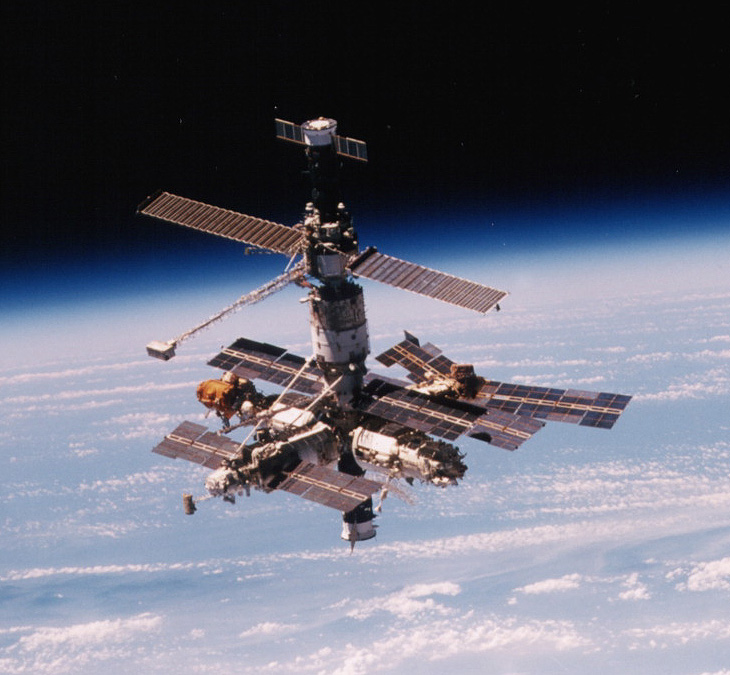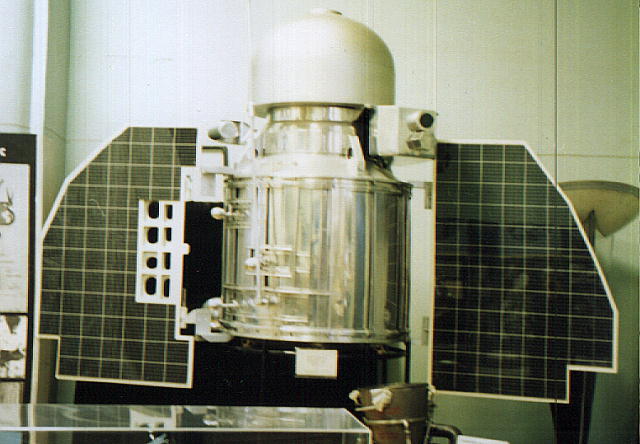Twenty-five years ago today — February 19, 1986 — the core module of the Mir space station was launched from the Baikonur Cosmodrome.

(Mir space station. NASA image.)
The first piece of Mir was launched atop a Proton rocket — an earlier model of the same type of rocket I saw being processed at Baikonur in 2002 — and over the years was joined to other modules to form the complete station.
As of the date of this post, the National Space Science Data Center page on Mir references a 1993 European Space Agency information page, but still presents some good information about the station. In contrast, this Wikipedia page has the full story on the space station, from this first launch until its re-entry in 2001.
“Mir” is usually translated as “peace.”
















